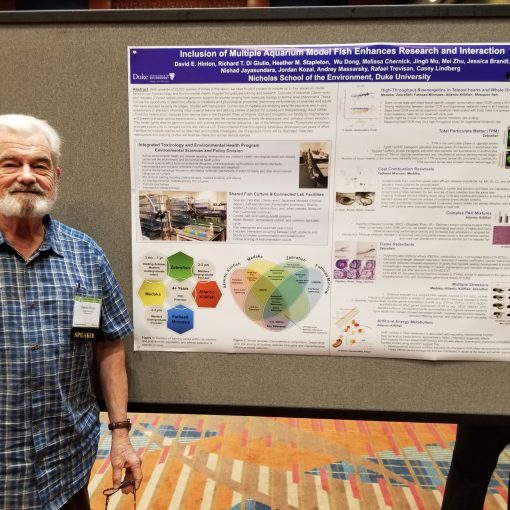
What do you get when two researchers who have both been studying killifish for 20-25 years collaborate and share their genomic datasets?
Hopefully, a lot of incredible insights into why and how certain animals—and humans—are susceptible to health impacts from hazardous substances.
Duke SRP Center Director Richard Di Giulio and Mark Hahn of the Boston University Superfund Research Program recently received a data supplement grant that will allow them to integrate massive amounts of data about the killifish genome. This data trove will enable both to learn even more about the particular genes involved in the fish’s unique resistance to contaminants.
Both Dr. Di Giulio and Dr. Hahn have long histories of studying killifish as a way to understand the genetic and health consequences of exposure to two types of toxic compounds: polycyclic aromatic hydrocarbons (PAHs), and polychlorinated biphenyls (PCBs), respectively. Their research with both sets of chemicals have demonstrated an important relationship between gene expression for the aryl hydrocarbon receptor (AhR) signaling pathway and resistance to pollutant exposure. Reduced activation of AhR is thought to play a part in the ability of killifish to adapt to living in contaminated environments, although underlying mechanisms are poorly understood. By taking advantage of the large genomic databases that the two centers have generated, the collaboration is expected to provide major insights into these mechanisms and perhaps shed light on human vulnerabilities.
Richard Di Giulio has focused on studying killifish at the Atlantic Wood site in Virginia since the Duke SRP Center began in 2000, and Mark Hahn initiated the Boston University SRP’s studies on killifish in the late 1990s. Their shared interest in killifish and extensive research findings have allowed Di Giulio and Hahn to compare and contrast their research findings over time and build on each other’s work, advancing our understanding of this important pollution response scenario. Their continued collaboration and data sharing promises to further illuminate important pathways in adaptive response to environmental contaminants.
“This is an exciting collaboration that has allowed us to bring in amazing expertise in bioinformatics from both universities that neither Center had access to before,” said Di Giulio.
You can read more about this powerful research collaboration story in a recent NIEHS feature.




